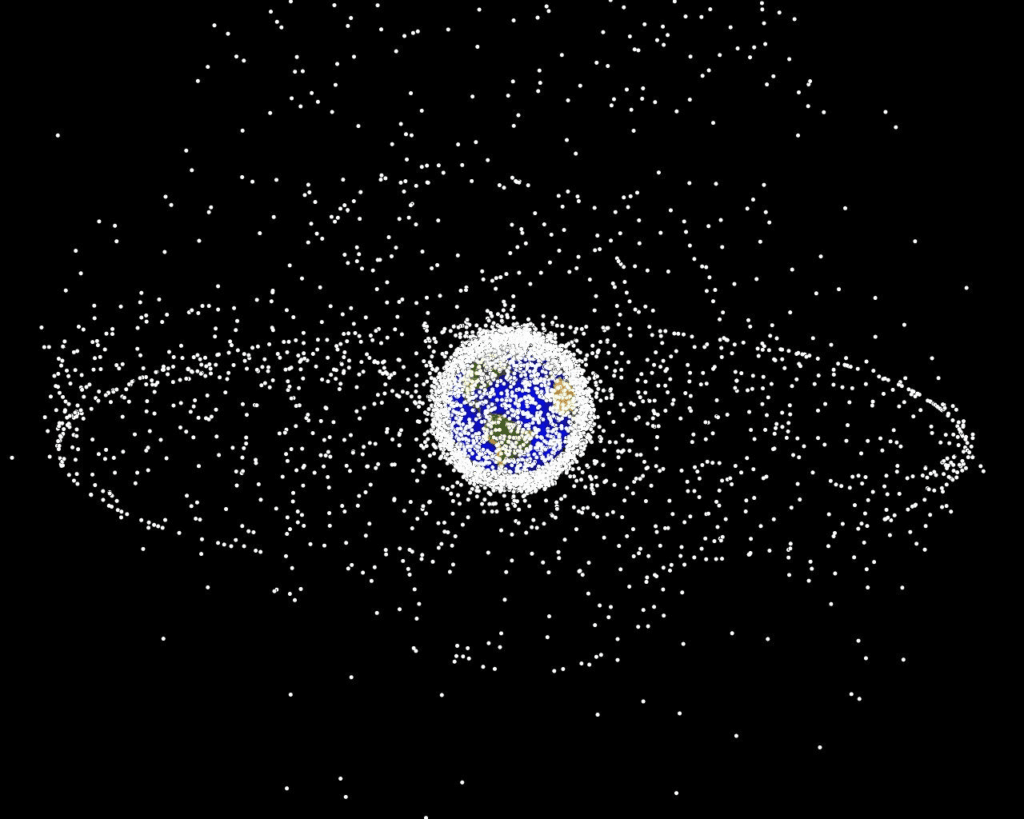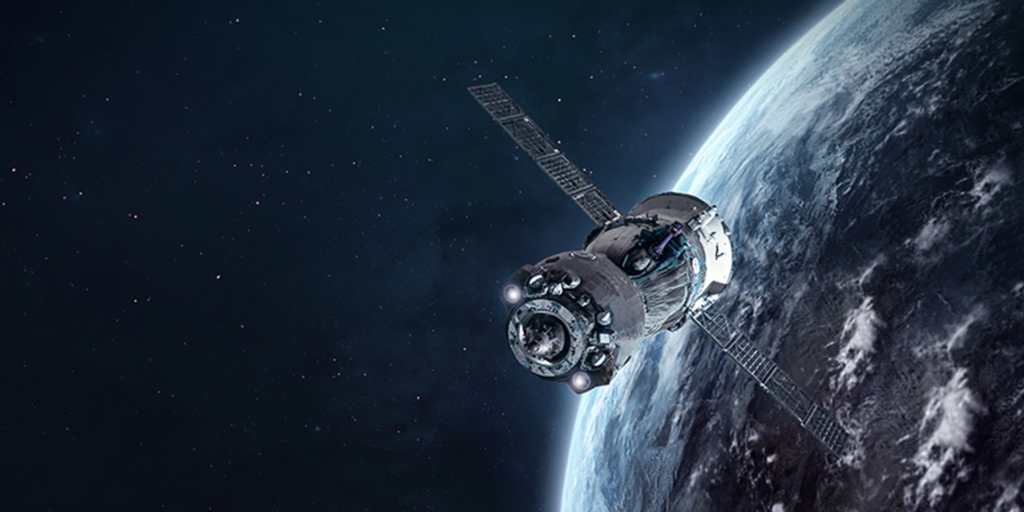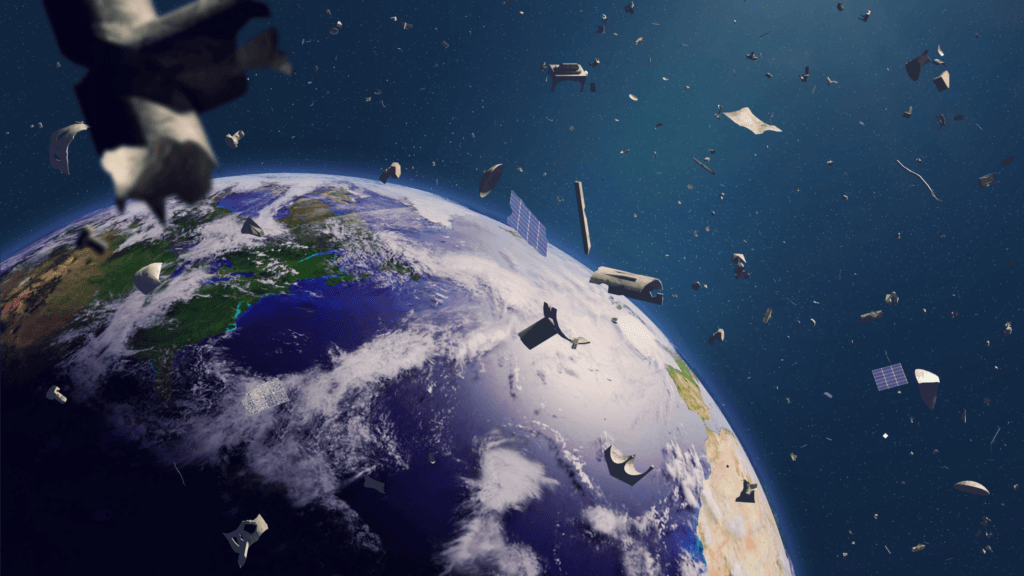As space exploration continues to advance, a growing danger lurks just above us: space debris. In November 2024, the International Space Station (ISS) faced a potentially catastrophic collision when a piece of spaceborne garbage came too close. Fortunately, a Russian spacecraft fired its engines to slightly alter the ISS’s trajectory, avoiding what could have been a devastating impact.
Had the ISS not changed course, the debris could have passed within just 2 ½ miles of the station. Such a collision could have led to the depressurization of the station, putting the lives of its astronauts at risk and possibly stranding them in space.
The increasing frequency of these near-misses highlights a growing problem in Earth’s orbit. The number of objects in space has surged in recent years, raising alarms among space traffic experts. The situation is becoming so dire that experts are warning of the potential for a catastrophic event known as Kessler Syndrome.
Tracking Space Debris: How Close Are We to Disaster?
What is Kessler Syndrome?
Kessler Syndrome, a phenomenon proposed by astrophysicist Donald Kessler in 1978, refers to a chain reaction in space where one piece of debris collides with another, creating a cascade of debris that leads to even more collisions. This could result in Earth’s orbit becoming so clogged with space junk that satellites become inoperable, effectively halting space exploration and endangering crucial technologies such as GPS and communication satellites.

While Kessler Syndrome remains a theoretical concern, its potential impact is significant. If unchecked, space debris could reach levels where satellite operations and even future space missions would be severely affected.
Space Debris: A Growing Threat
Since the beginning of the space age in 1957, over 650 incidents have led to the fragmentation of objects in space, including satellite collisions and rocket explosions. For example, in 2021, Russia launched a missile at one of its own satellites, creating more than 1,500 pieces of debris. In 2009, the collision of a Russian military satellite and an Iridium communications satellite produced nearly 2,000 pieces of debris.

More recently, small but significant fragments continue to be generated. For instance, in December 2024, a US Air Force satellite broke apart, generating at least 50 new pieces of debris. These events, though smaller in scale, add to the growing risk of collisions in space.
Tracking Space Debris
Space situational awareness (SSA) is crucial for avoiding collisions in space. The process involves tracking potential close approaches between objects, a practice that often results in multiple alerts per day. However, the vast majority of objects in orbit are too small to be tracked by current sensors. For instance, objects smaller than a tennis ball are often untrackable, making it impossible to predict every potential collision.

Even small objects in orbit pose significant risks. A piece of debris the size of a fleck of paint can cause major damage to a satellite due to the extreme speeds at which objects travel in space.
The Risk of Space Congestion
Space congestion is most severe in Low Earth Orbit (LEO), which extends up to 1,200 miles above the Earth’s surface. This region is home to many active satellites, including those that monitor weather, climate, and communication. A chain reaction of debris in LEO could have catastrophic effects on astronauts, satellite communications, and space exploration.

Higher altitudes, such as geostationary orbit (GEO), are also at risk. At GEO, satellites are vital for global communication, including TV, internet, and military operations. However, debris in this region takes much longer to deorbit, with pieces potentially remaining in space for centuries.
The Kessler Syndrome Threat
The cascading collisions of Kessler Syndrome could lead to a devastating accumulation of debris, disrupting space operations for generations. While Hollywood has popularized the idea in films like Gravity, the reality of such a scenario is much more complex. The increasing number of satellites and debris in orbit means that space traffic is becoming increasingly difficult to manage.

Despite significant efforts to track and manage debris, the risks of a catastrophic Kessler-like event remain. Experts agree that the situation is dire, with the debris field growing every year.
The Path Forward: Prevention and Cleanup
Addressing the growing space debris problem requires both technological innovation and international cooperation.

1. Cleanup Technologies:
Efforts are underway to develop technologies capable of removing debris from space. For example, the European Space Agency’s ADEO system uses a passive braking sail to drag defunct satellites out of orbit and burn them up in Earth’s atmosphere. However, such technologies are expensive and still in the experimental stage.
2. International Regulation:
Experts also stress the need for stronger space traffic regulations. While the United Nations has made some progress in creating space traffic guidelines, experts believe that individual countries, particularly the United States, should lead the charge in implementing space debris prevention measures.
The Need for Urgent Action
Space debris is an escalating threat that requires immediate attention. With the rise of Kessler Syndrome and the rapid increase in space congestion, the future of space exploration and satellite operations is uncertain. Experts agree that without comprehensive cleanup strategies and international cooperation, space could soon become too dangerous for future missions.
Connect With Us On Social Media [ Facebook | Instagram | Twitter | LinkedIn ] To Get Real-Time Updates On The Market. Entrepreneurs Diaries Is Now Available On Telegram. Join Our Telegram Channel To Get Instant Updates.
Jason Foodman is a well-known entrepreneur and executive with experience operating companies globally and launching global companies in the U.S. market. Mr. Foodman started, scaled, and sold several notable technology firms, including SwiftCD and FastSpring.






